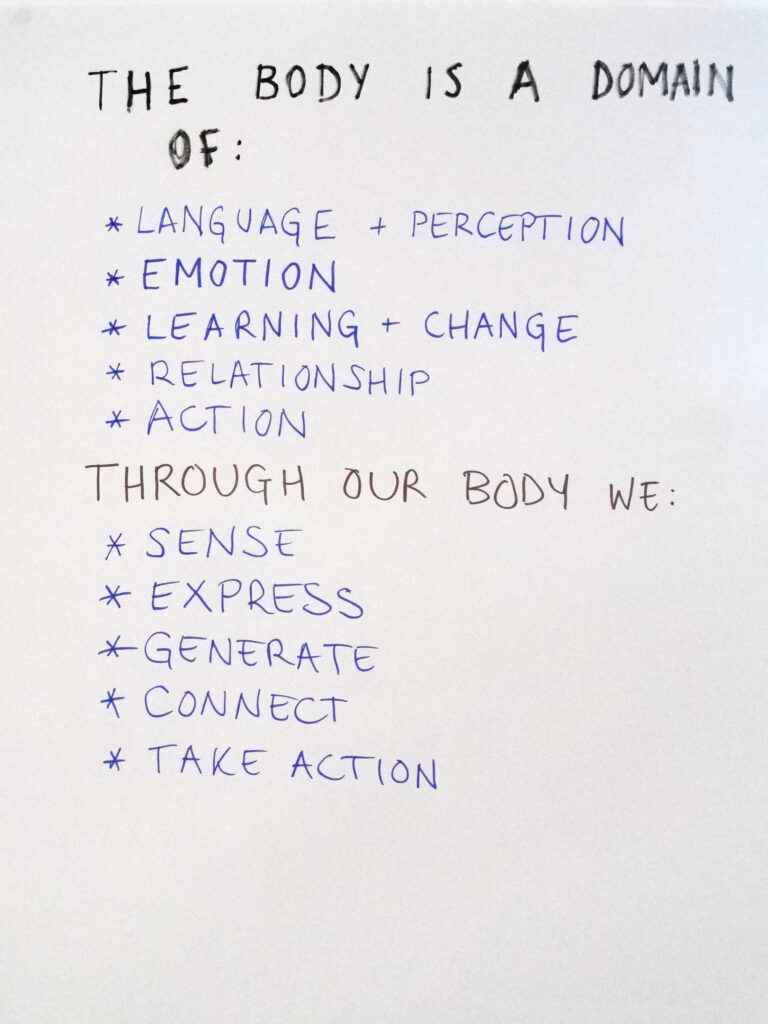In June, we had the pleasure of coming together for the second rendition of our Safe Yeah? course that we ran in April. Even though we had run the same workshops two months beforehand, we know that each course is different and special.
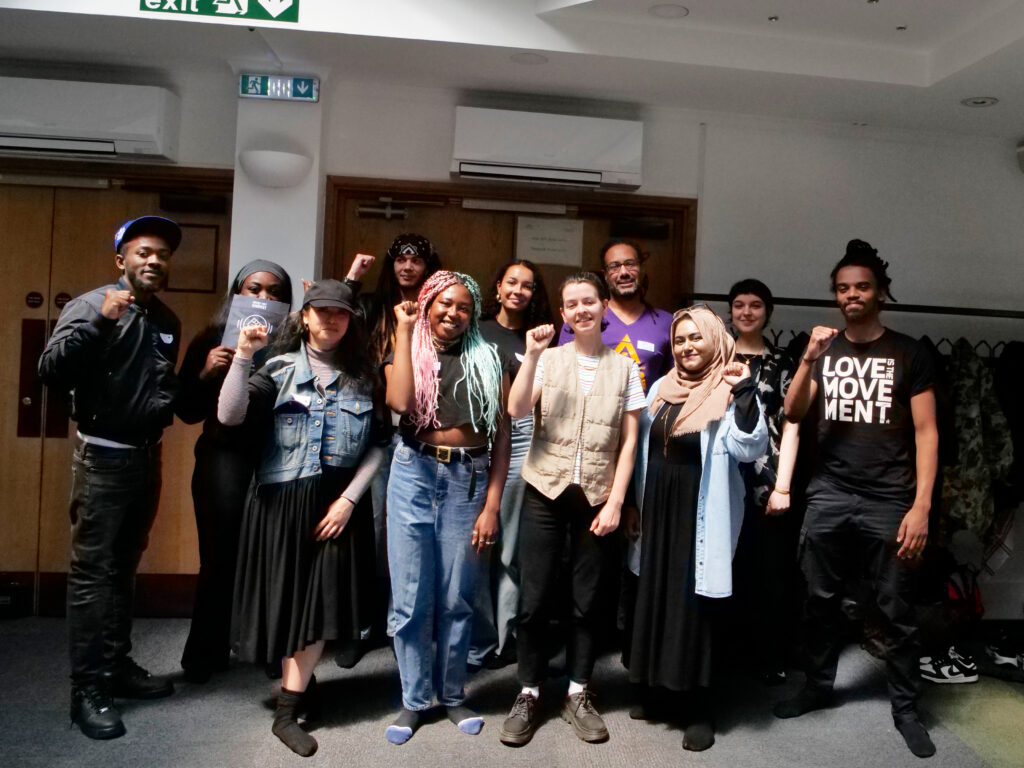
We started the Saturday with welcomes, a grounding ritual, introductions with names and artistics practise and co-creating community principles.
Our session on youth work backstories focused on the connections between what we experienced as young global majority people, our relationship with institutions and cultural practices, and how that motivated participants to be involved in youth work.
On the prompt of ‘schools’, people talked about how the schooling system shapes people. This includes through hierarchies and limitations, not being able to get access to support; diagnosis; not encouraged to listen to your body and needs; and being unable to be creative. The irony of having to unlearn things you learned in school was also pointed out.
Schools led to a conversation around values and community. We discussed the moral positioning of British values, and who is framed as ‘bad’ and committing ‘crimes’, despite Britain’s history and present day actions. We talked about counter-storytelling; how we are our own support systems; the violence we are facing; learning from movements across the globe who are facing oppression and their tactics and the flaws in the way we are organising. Participants also raised the sustaining of long struggles across Palestine, Sudan and Congo, and helped young people to learn from those struggles, and practice solidarity and hope.
When we reflected on ‘cultural practice’, people discussed the gaps that can exist in community settings, such as lack of space for young women in religious settings; lack of conversations about community politics; lack of space for curiosity, criticism and learning. Some people also reflected on what it means to be a young person who is doing youth work. We discussed the need to be a voice for young people, the importance of them being heard, and having spaces for young people to be young people.
The focus on ‘young clubs and social centres’ included the importance of young people being able to have conversations about anything they want to, including their identity and sexual orientation. We thought about how metal detectors can put young people off from going into those spaces. This is connected to how we’re always fighting for the opposite of what the system wants, and trying not to re-create the existing power imbalances.
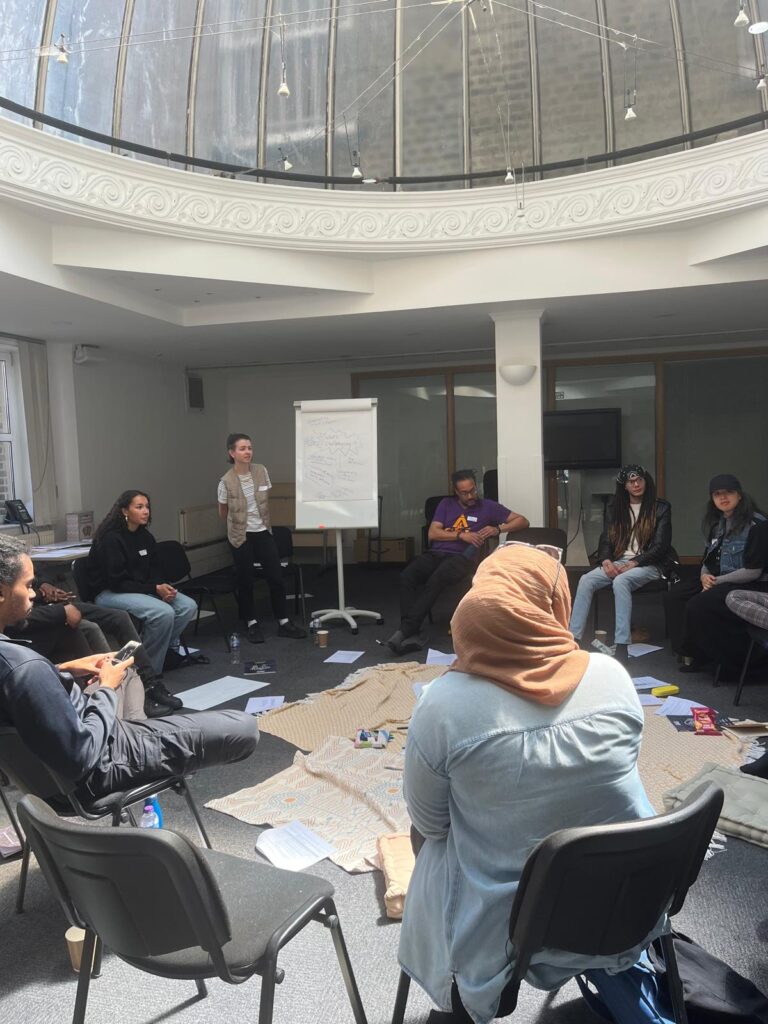
After this, we moved into our reimagining safeguarding session with Latifa Akay, who we have worked with on our ENRGY and ENRGY RE-UP course. We started with our prayers and wishes for young people, for Eid and the Hajj. These prayers and wishes included finding joy; moving towards liberation; seeing possibilities; finding reasons for gratitude, even in oppressive times; being part of community and feeling responsibility and heard for each other; feeling heard, seen, valued; not losing their sense of playfulness; being able to grow old; realising the trauma they’ve experienced is not their fault. Latifa invited us to hold onto our hopes during the session.
We explored parts from Latifa and Alex Johnston’s Radical Safeguarding Handbook, with Latifa explaining the context of creating the book: struggling to find training to support the team she worked with that didn’t pathologise young people of colour.
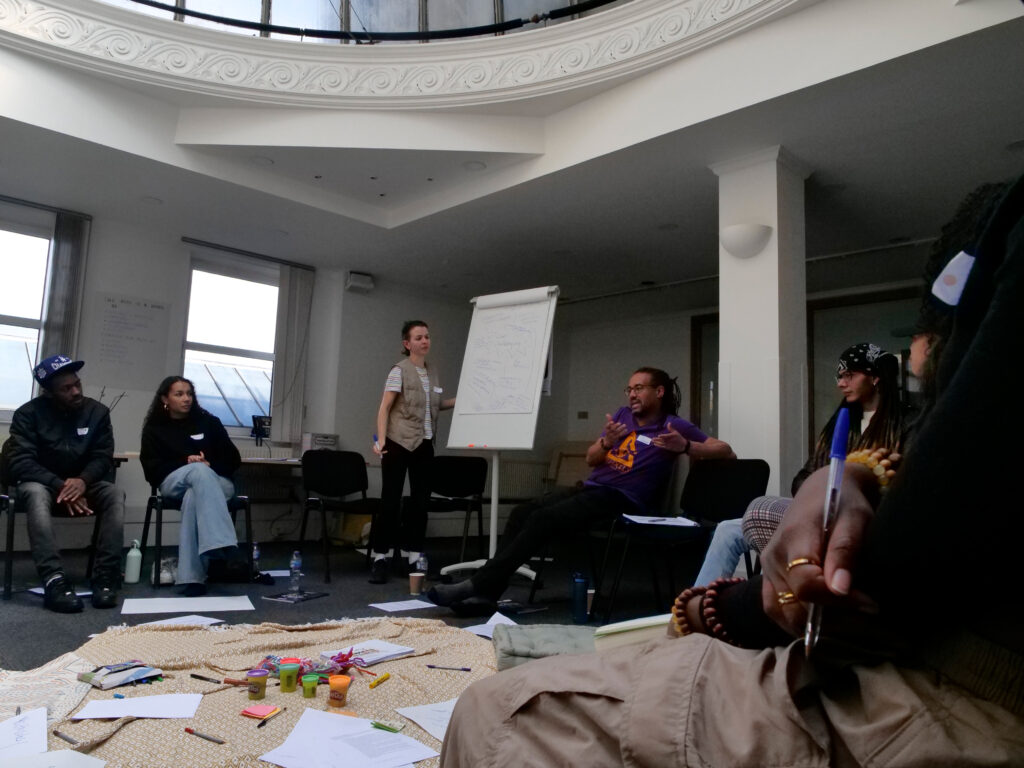
Examining what’s challenging about safeguarding, participants noted the ‘tick-box’ nature; the struggles of young people not getting the support they need during the process, or if they don’t meet a ‘threshold’; lack of aftercare; the struggles of establishing trust, and rebuilding after a referral. We also analysed how safeguarding focuses very little on institutional harms, and mostly on personal harms; and the struggles with institutions that are proactively harmful like the police, while there are under-resourced services, and long waiting lists. Our course attendees reflected on communities not sharing/working together as much as we’d like, and feeling stretched while trying to hold support for young people.
Sai highlighted lessons learned from Annick around the importance of radical honesty with young people – allowing them to swear, and sitting in the feelings of young people without trying to solve it.
After this discussion, we had another nutritious lunch from Maame’s Kitchen. When we returned from lunch, we played a quick game of rubber chicken to give us some energy.
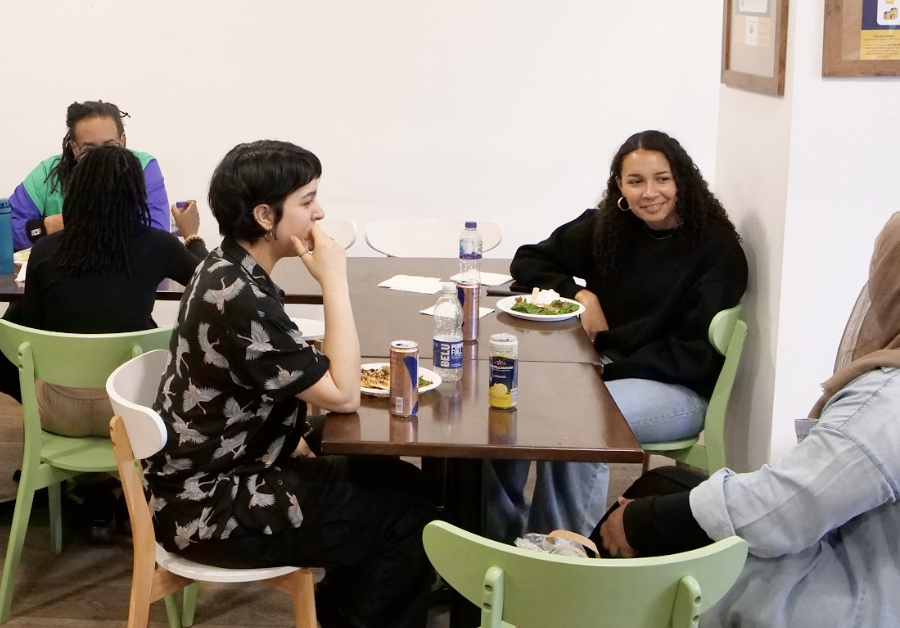
In the second half of Latifa’s reimagining safeguarding session, we had group reading of a thread from Roxy Legane from Kids of Colour. From this anecdote, participants talked about how anger is the least socially accepted form of grief, questioning “who gets to be angry?” We talked about the needs for space for kids to be kids, and how it takes a village to raise a child.
We also thought about how we can create cultures of care in practice, which included agency; autonomy; the importance of signposting; knowing our own capacity; being aware of communication needs. Latifa shared her experience of user manuals which can include frameworks for people to share their boundaries, like “I work best when…”; “You’ll know I’m struggling when…”; “Things you should know about me…” and care plans. We discussed normalising check ins and feedback, but acknowledged this can be hard to raise with hierarchies of power.
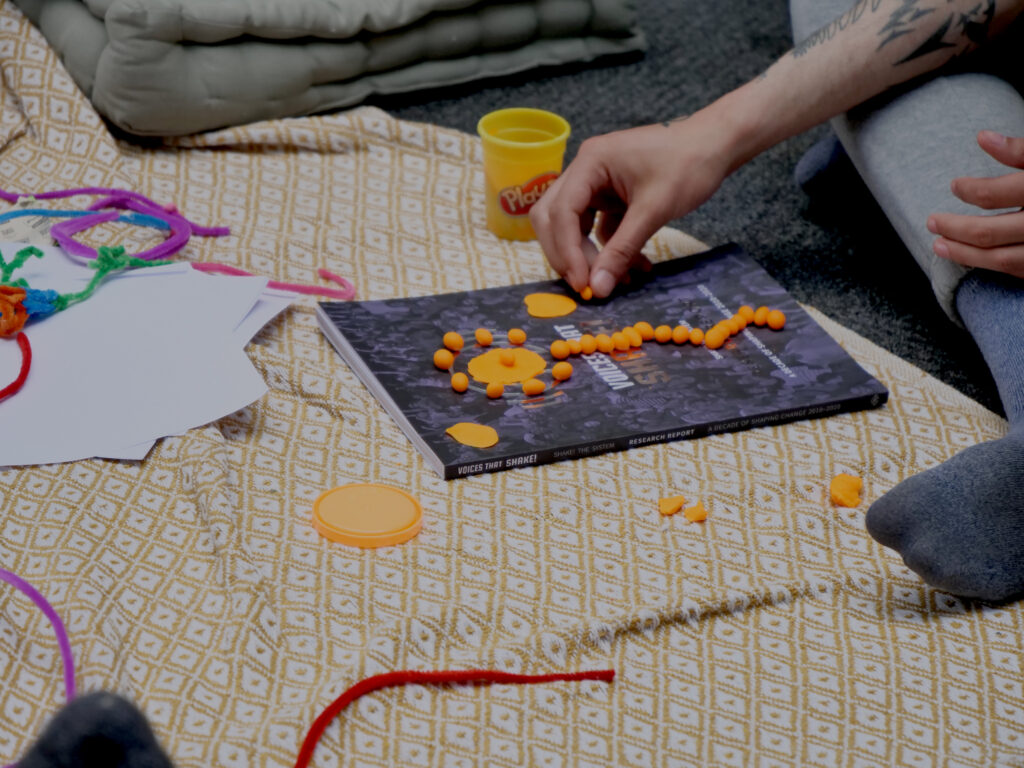
With an exercise from Latifa and Alex Augustin, a facilitator at April’s Safe Yeah? course, and a participant at our ENRGY RE-UP course, we focused on centering and how we can sit in uncertainty with the work we’re doing. We recognised that the current systems build on top of things that are broken, with lack of solid guarantees. Latifa encouraged the youth workers to measure where they’re starting first, and recognise how the stakes are higher for some than others to sit in uncertainty. She highlighted that it’s necessary to sit in uncertainty to reimagine safeguarding, but we can focus on how we support each other to do that.
Alex encouraged us to focus on the habits in the body, and what’s engrained with us. We did an exercise in pairs, where we’d practise walking towards our partner, and responding with “Yes” “No” or “Maybe” in response to a question. To help us sit in uncertainty, we may have difficult conversations and engage in reflective practice. We can listen to where the uncertainty is coming from (e.g. fear of getting in trouble; fear of not helping young people) and where we can feel it in the body; we discussed removing shame/guilt and getting more skilled with how we feel. This can include discerning between concern and worry – we might be worried about something that isn’t an actual concern.
This led to a conversation and practise about why centering is important, and the conversation included making different decisions and ensuring they’re coming from a grounded place; the ability to ask yourself if what you’re doing is in alignment with your beliefs; and being able to use centering in different ways to give us a range of choices in how we respond.
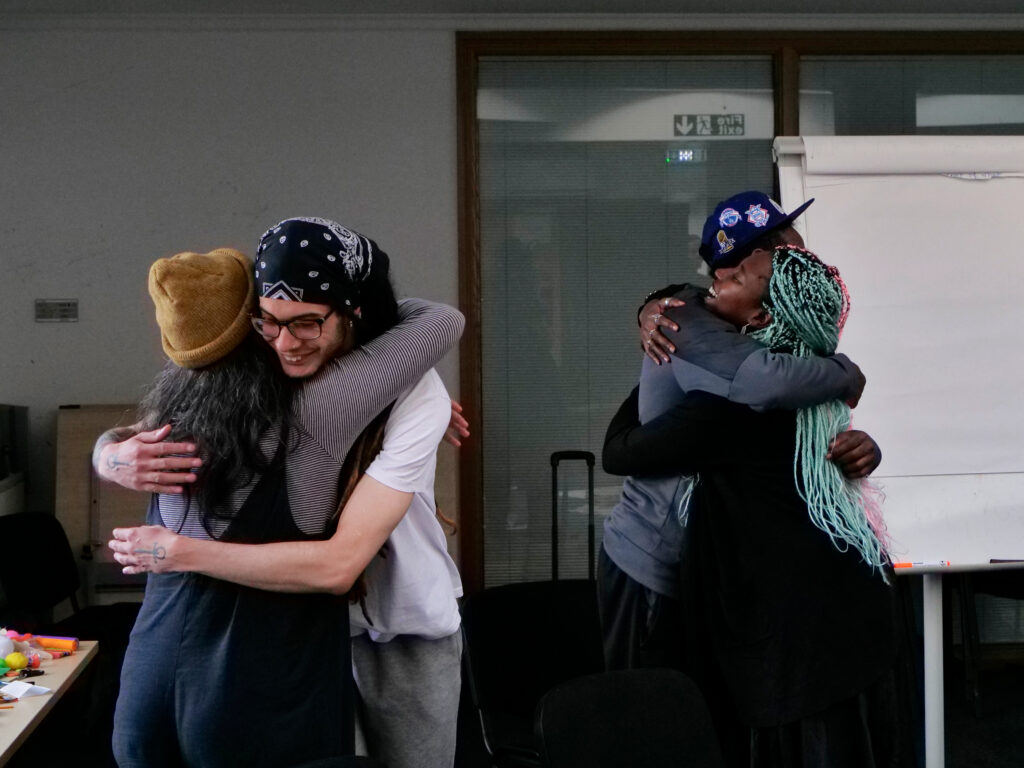
We closed the day out with a closing grounding and ritual.
On Sunday, we returned, and started the day with one of our favourite course games, alphabet attack. We loved seeing the differences in the game between this course, and April’s version, with this course including words from ‘abolition’ and ‘bystander training’ to “youth” and “zebra crossing.” Home, Peace and Time were some of the common words between the two courses. We reflected on some of the answers from this session, and welcomed the impromptu discussion on how the game could be made more accessible, adapted online and applied to the participants’ youth work.
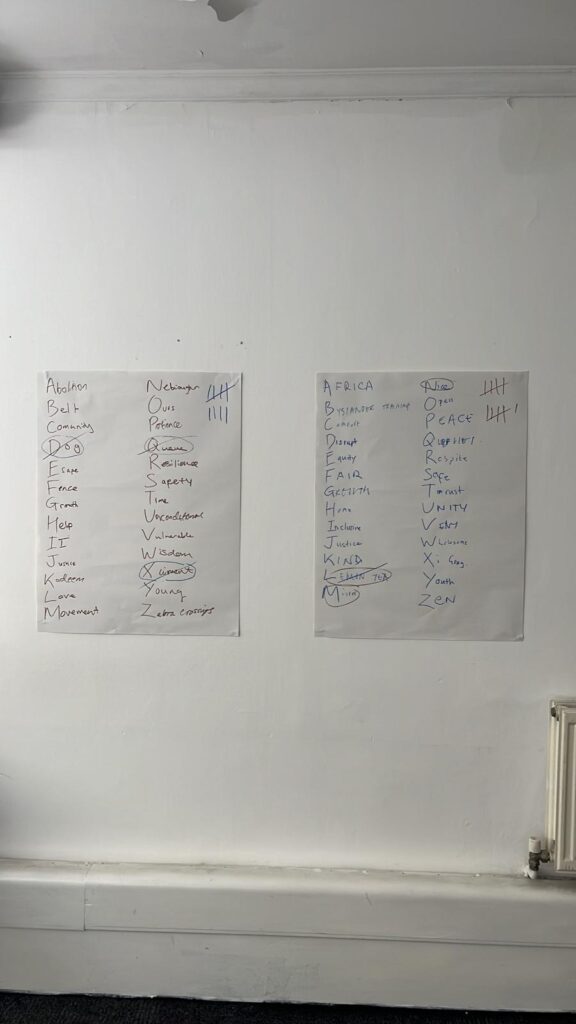
Next, we read some pages from our research report, and chatted about funding in radical youth work. We then had a conversation on what sustains vs limits our work. In being sustained, people talked about trust and collectivity, and sustaining us to be interdependent. This included cultivating what we need – curiosity, openness, and noticing what survival strategies don’t work for us. Alex shared Farzana Khan’s words “We know how to come together but don’t know how to move together.” Some participants are sustained through thinking about who we’re doing this for, and the shared principles and politics we have which are key to building trust. We spoke about the evil necessity of money; the lessons from elders and their sacrifices. Attendees said healing can be taking a step back from yourself, and the need to have spaces to disagree and paths for repair is important in sustaining us.
The conversation looked at the complexities of resting without guilt which can sustain, and limit us, and playful elements of rest, which can sustain us.
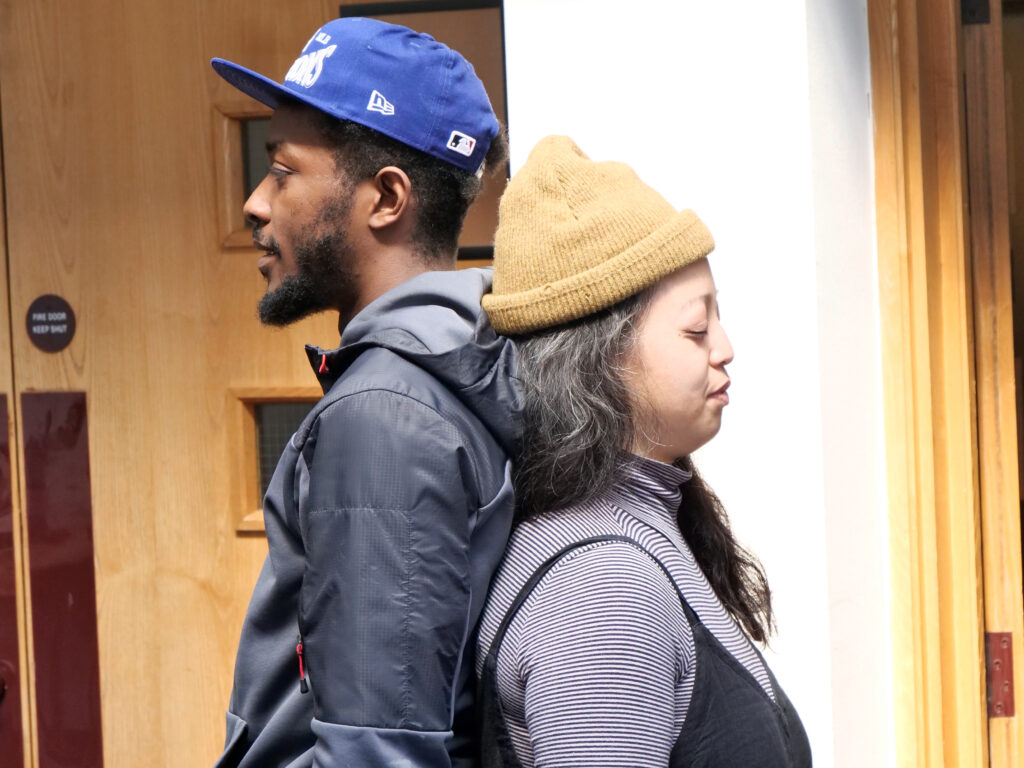
After lunch, we took part in a gentle movement exercise, facilitated by Alex, supporting participants to use embodiment for a sense of safety. As participants moved, Alex prompted us through talking about moving with intention, and questioning what it looks like to feel safe and protected. After the exercise, participants’ spoke about their experience, and what the exercise brought up for them. For some, there was a feeling of release, feeling good, and feeling held. Others spoke about the usefulness of transferring tension into something physical that we can then let go of, and being more aware of our body, and how we feel in those moments.
We then ventured outside to the local park for some green space and fresh air, encouraging the sun poking out in the afternoon, after some rain that weekend. We had the opportunity to reflect on what we’d learned over the weekend, and observe nature.
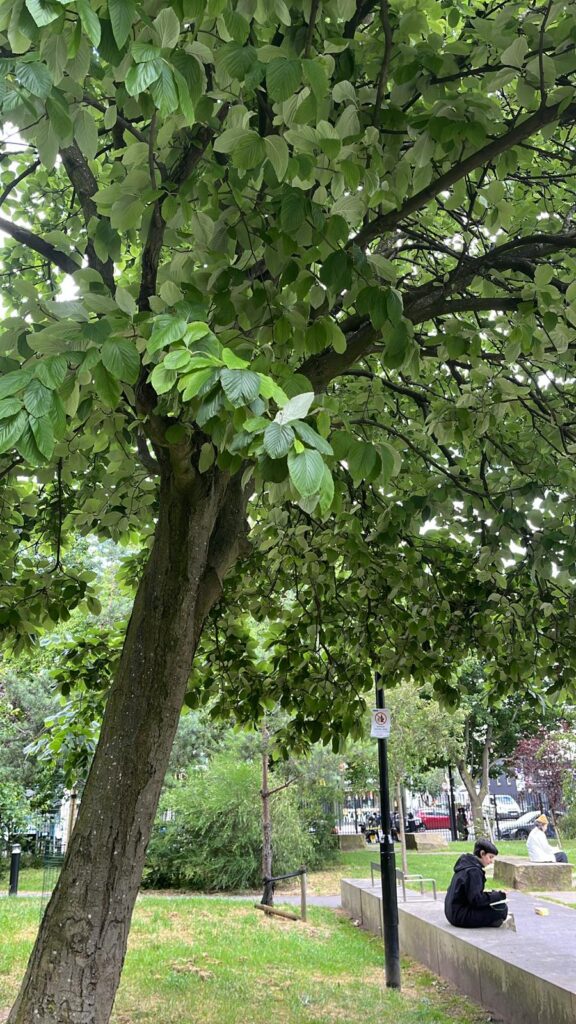
For our final session of the course, we mapped out how we could centre healing and community in our work, projects and organisations. Mapping out healing looked at how we can bring people together more and find out how their experiences have shaped their views; it considered the individualistic nature of recent focuses on self care, and how we can practise self care in tandem with caring for others. People talked about the healing nature of history, whether on a personal or societal level, and how this can provide reassurance of things that aren’t our fault. People reflected about the importance of food, how it nourishes us, and the reminder of how nature is part of healing. People considered how we can increase green spaces and be imaginative with healing. People talked about how even if there’s things they don’t have control over, there’s a lot we do have control over and there’s time to make change.
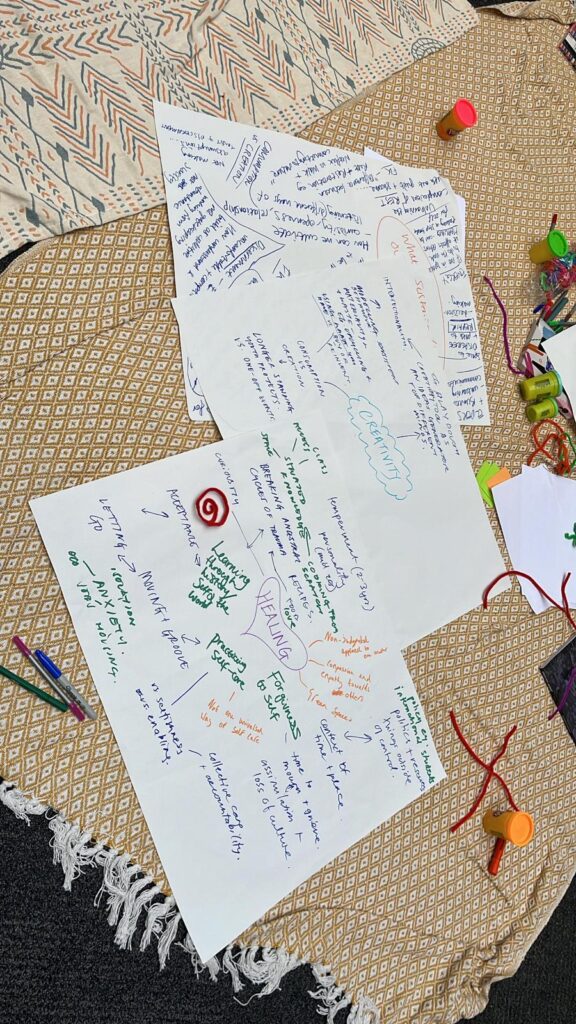
When mapping out ‘community’, we imagined what it’d look like to facilitate a space for African diaspora youth, focused on Congelse and Sundanese solidarity, using things people had learned during the course. We thought about the different ways to bring culture, and encourage young people to do the same, including poetry, performance and community defence. At Shake!, we’d love to be involved in supporting this space, which we also spoke about.
As we brought the space to a close, we reflected on other ways we could continue the work and journey we’d started during this course, and how participants could connect, and learn with, each other and Shake!
We loved meeting all the participants, the conversations that took place, and appreciated people trusting us with the space, with their reflections and are looking forward to working more with youth and community workers from both April and June’s course in the future.
